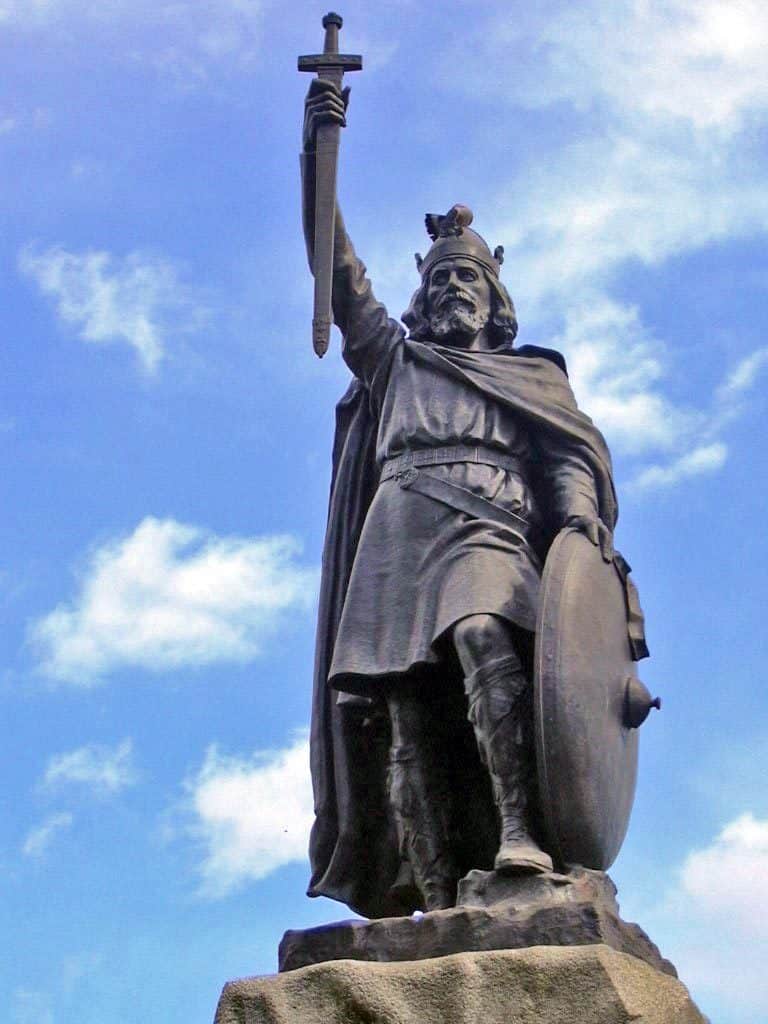King Alfred was the youngest son of King Aethelwulf and the grandson of King Egbert. He had three brothers who saw the throne before him: Aethelbald, Aethelbert, and Aethelred.

He took the throne at a tumultuous time when the Vikings had taken control of the north and were pushing into Wessex.
He would change and influence England forever.
Jump to:
King Alfred the Great Facts: Ascension
- King Alfred journeyed to Rome twice to meet the Pope. The final trip was with his father, King Aethelwulf.
- King Alfred was married to Eahlswith of Mercia. This marriage helped unify Mercia and Wessex.
- King Alfred was a bit of an afterthought to his brothers. He was the youngest and often overlooked.
- It was not until his brother Aethelred's reign that he began to be noticed for his intelligence on the battlefield and nation-building.
- He stepped into power when the nation around him was crumbling. His brother had been defeated in multiple battles against the Vikings, and it looked as if the Vikings would soon be in control of Wessex.
King Alfred the Great Facts: Early Success
- The Vikings had overthrown the kingdoms of East Anglia, Northumbria, and Mercia when Alfred took power. They had already begun to set their sights on Wessex shortly before Alfred's brother died of wounds received in battle.
- King Alfred began to rally his allies. However, his so-called allies found it more beneficial to ally themselves with the Vikings.
- In 877, Alfred was pushed back to a small corner of the marshes around Athelney in Somerset.
- At his lowest point, the young king planned a surprise attack on his adversaries at the Battle of Edington. He was victorious and chased the Vikings back to their base and put it under siege.
- The Vikings surrendered, and their leader Guthrum agreed to accept baptism and converted to Christianity.
- The Vikings retreated back to East Anglia. King Alfred had made a significant gain.
King Alfred the Great: Reforms
- King Alfred set up fortified towns called burhs. In exchange for free plots of land within the towns, settlers provided a defense force. The burhs were also encouraged to become centers of commerce and local government.
- King Alfred also began to build a formidable navy to combat the Vikings.
- He wrestled London from Viking control and reached the agreement by which England was divided into two zones: the south and west, where Saxon law would apply, and the north and east, where Viking law ruled. This second territory became known as the Danelaw
- King Alfred led many reforms in the area of scholarship and encouraged education.
- He also developed a fyrd, which is similar to the militia, to defend local towns.
- King Alfred ushered in the Golden Age of England during the Anglo-Saxon era.
Conclusion
King Alfred the Great changed the landscape in England. He ushered in many reforms and brought stability to the region.
When he took the throne, England looked to be conquered by Vikings. Alfred made a surprise attack that defeated the enemy and forced them to retreat.
Afterward, he made many reforms that allowed Britain's economy to thrive and fortify it from future attacks.
He is one of the greatest Kings ever to hold the throne in England.
